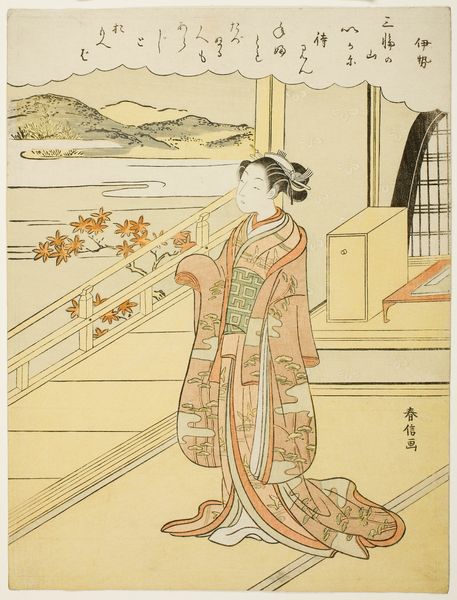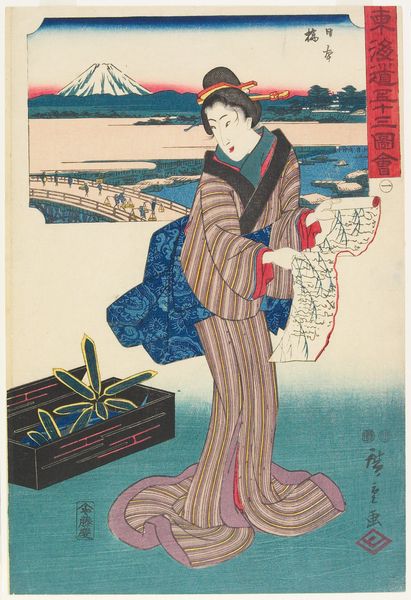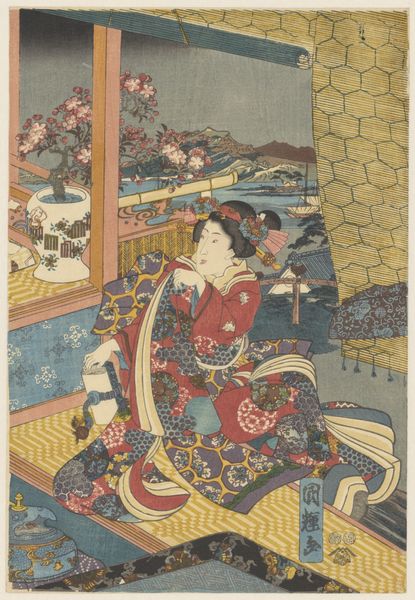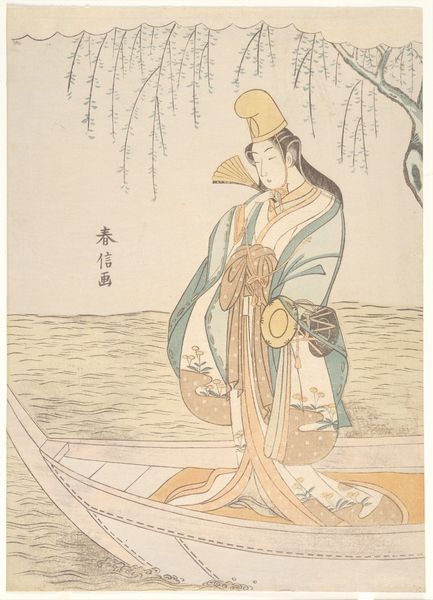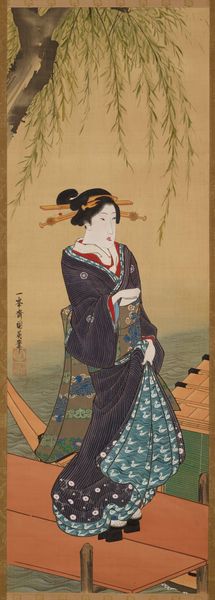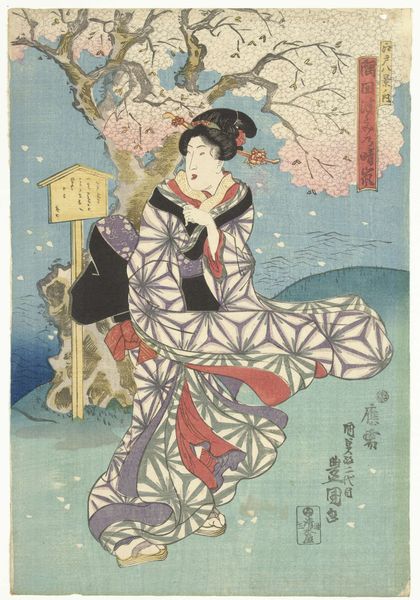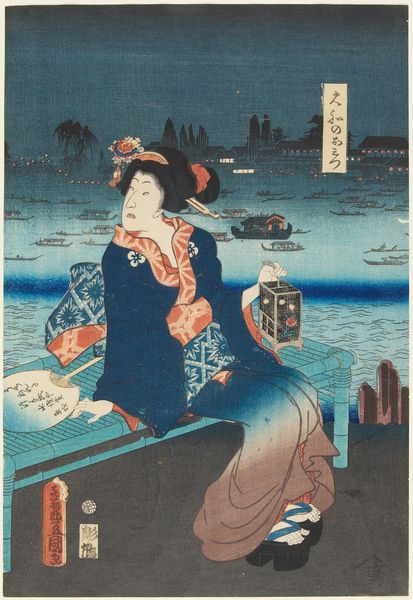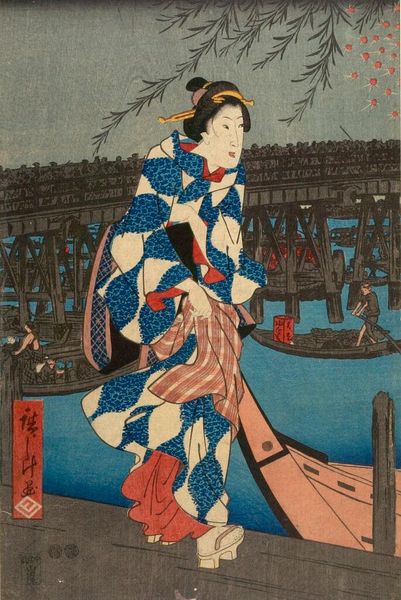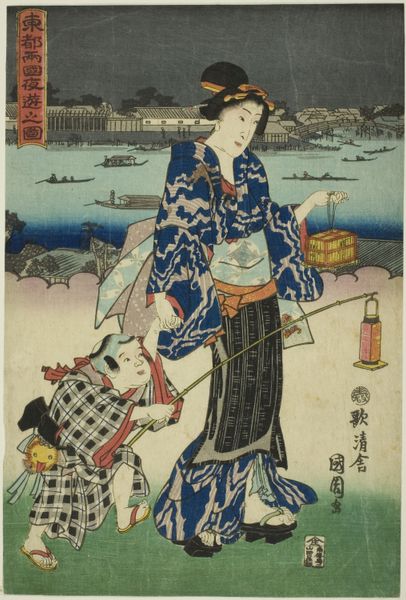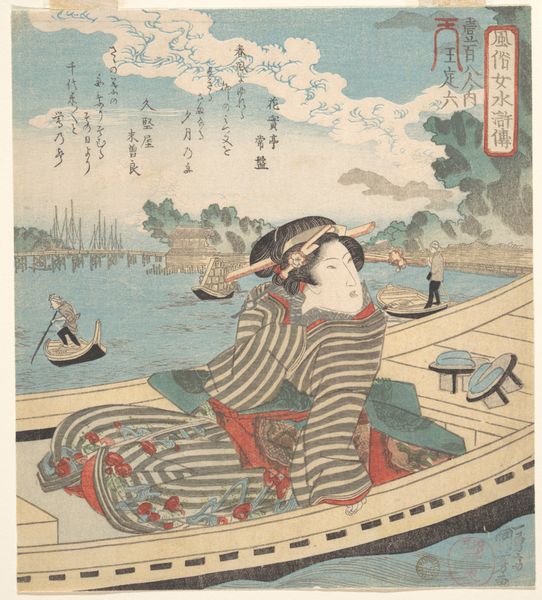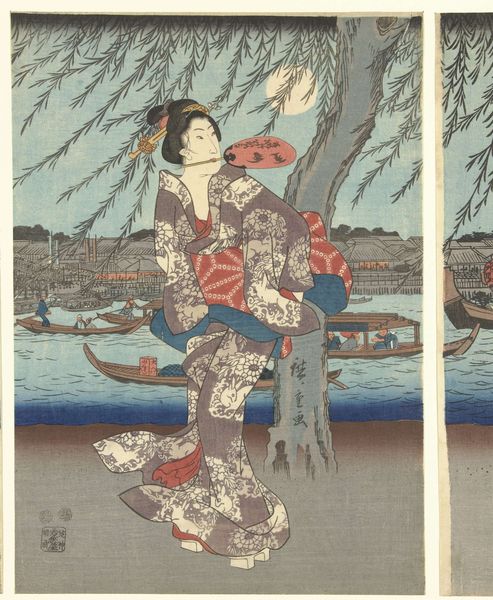
Beroemde plekken in de Oostelijke hoofdstad: Genietend van een avondbriesje bij de Ryogoku brug c. 1847 - 1848
0:00
0:00
utagawahiroshigei
Rijksmuseum
print, woodblock-print
# print
#
asian-art
#
landscape
#
ukiyo-e
#
woodblock-print
#
genre-painting
Dimensions: height 361 mm, width 253 mm
Copyright: Rijks Museum: Open Domain
Curator: Let’s discuss Utagawa Hiroshige's woodblock print, dating from around 1847-1848, entitled "Famous Places in the Eastern Capital: Enjoying the Evening Cool by the Ryogoku Bridge." What are your initial thoughts? Editor: It’s striking. The woman's robe immediately draws my attention – that bold, checkered pattern dominates the composition, almost flattening the space. It speaks to the labor involved in producing such intricate textiles, doesn't it? Curator: Absolutely. But think also of the print’s cultural context. This is ukiyo-e, images of the floating world, of pleasure and leisure. The woman is positioned between nature, represented by the weeping willow, and commerce or the city, indicated by the boats on the river. How does this intersection reflect on her role in society? Editor: It highlights the tension between idealized beauty and the reality of production and consumption. These prints weren’t just aesthetic objects; they were commodities, traded and distributed widely. Her beauty is part of a whole material process. Look at the bridge and boats – so many people rendered using skillful woodblock techniques, all enabled by human labor. Curator: Precisely. Hiroshige was a master of landscape, yes, but he also depicted the lives of ordinary people. This woman might be a courtesan, a celebrated figure. The print creates a carefully constructed vision of Edo society, filtered through the lens of idealized beauty but nevertheless showing a part of it. And consider the lanterns on the boats... the artist captures an ambience or moment, that evening breeze described in the title. Editor: And those lanterns, carefully crafted objects themselves, also illuminated a scene made accessible by commerce and industry. It’s all interconnected. Even the paper of the print is part of the network. I'm also interested in the artist’s process here and its emphasis on color and composition, showing us the construction, labor, and consumption chain behind the work. Curator: A chain reflecting complex dynamics of gender, class, and the commodification of art, really. Considering how the print's availability might empower certain demographics, it complicates historical narratives that have sometimes sidelined the role of women and commoners during this period. Editor: Absolutely, by appreciating the work, processes, and labor behind a piece like this, we appreciate the community too. Curator: Yes, considering the intersectionality involved truly enriches our experience. Editor: Indeed. It's not just an image; it's evidence of production and social life.
Comments
No comments
Be the first to comment and join the conversation on the ultimate creative platform.

